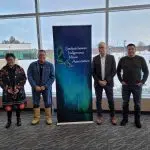
‘Unfortunately, we struggle:’ Sask. First Nations reflect on education gap
Students attending First Nation schools receive roughly half the funding their peers in provincially funded ones do. Chronic underfunding is not only to blame, but according to Saskatchewan First Nations, so is an old, archaic system of institutionalized racism.
According to a report by the Saskatoon Regional Economic Development Authority, over a billion dollars in economic activity has been lost because of the gap between First Nation and non-First Nation education.
“This is something our First Nation have been saying for over 20 years,” Federation of Sovereign Indigenous Nations (FSIN) Chief Bobby Cameron said. “Yet we’ve been faced with persistent under funding for our on-reserve schools and for post-secondary education.”
According to a recent FSIN press release, students require $20,000 to obtain a quality education.


